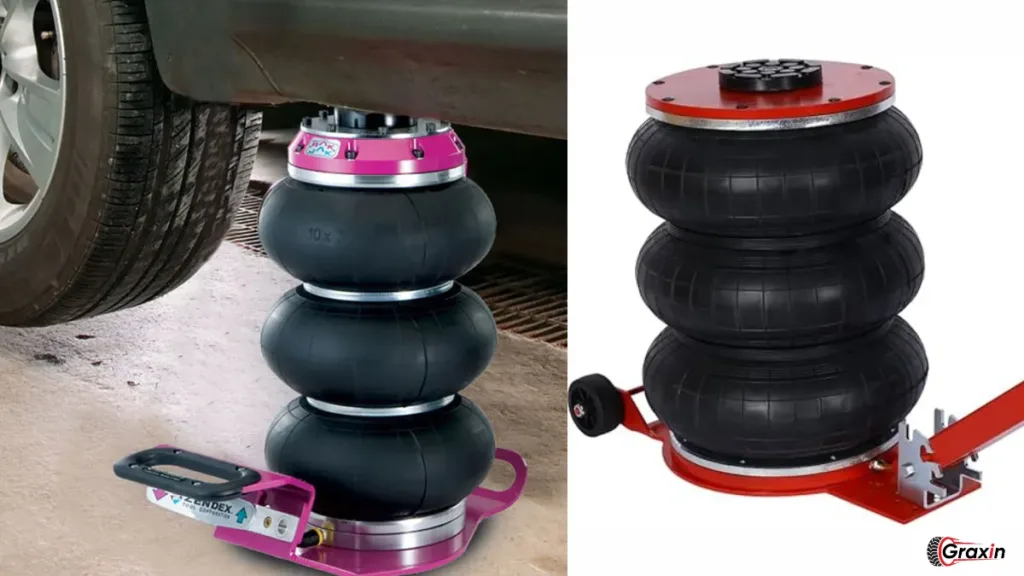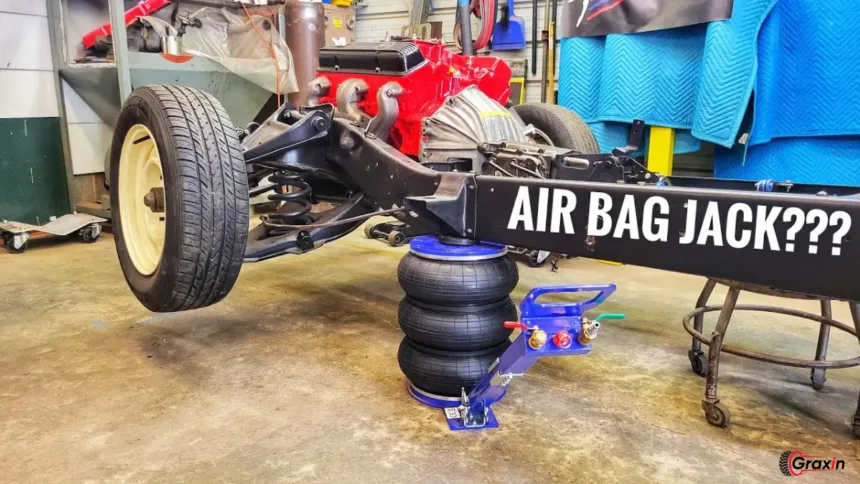Modern forms of lifting devices are air bag jacks, or pneumatic jacks, used in various fields to lift an automobile, machinery, and other large objects. Unlike hydraulic jacks that depend on fluid pressure, air bag jacks use compressed air in a tough rubber or synthetic material to lift the object without jerking much.
History and Evolution of Lifting Tools
Lifting tools have been very essential since ancient times. From simple levers to more sophisticated hydraulic systems employed today, the technology of lifting heavy loads has constantly evolved. More importantly, air bag jacks gained relevance due to their portability and ability to lift heavy weights in environments where other jacks lack capabilities in lifting heavy weights.
How Air Bag Jacks Work
A simple working principle for air bag jacks is inflation. Once inflated, the air bag expands and lifts whatever load is placed on top. Multiple layers of reinforced material are layered within air bag jacks so that they do not burst under high pressure. Operating using either a compressor or a portable air tank, air bag jacks are capable of lifting loads very fast, which makes them very indispensable in many industries.
Types of Air Bag Jacks

Single Bag Air Jacks
Single bag air jacks are the simplest form, featuring one inflatable bag that expands to lift objects. They’re great for lighter loads and are often used in smaller vehicles or lighter industrial tasks.
Double Bag Air Jacks
Double bag air jacks are composed of two inflatable bags stacked together. This increases the lifting height and capacity, making them ideal for medium to heavy-duty applications, such as larger vehicles or machinery.
Multi-Bag Air Jacks
Multi-bag air jacks are the lightest ones among all. They are applied to the heaviest loads. Sometimes, three or more bags form one jack, which again contributes to higher lifting power and stability. They are most widely used industries working on heavy construction vehicles or rescue works.
Advantages of Using Air Bag Jacks
Lightweight and Portable
Unlike their hydraulic counterparts, air bag jacks are much lighter, making them easier to transport and use in various environments. Whether you’re on a construction site or in an automotive garage, their portability is a huge benefit.
High Lifting Capacity
Despite their lightweight design, air bag jacks boast impressive lifting capabilities. Some models can lift loads exceeding several tons, making them suitable for a wide range of industrial and automotive applications.
Safety Features of Air Bag Jacks
Air bag jacks are designed with a few basic safety features, including pressure relief valves to prevent overinflation. The inflated bag has wide surface areas that distribute weight evenly to nearly wholly eliminate the chance of tipping or instability.
Where Are Air Bag Jacks Used?
Automotive Industry
Air bag jacks are frequently used in automotive workshops for lifting cars, trucks, and SUVs. They’re particularly useful for changing tires, performing undercarriage inspections, or repairing suspension systems.
Construction and Heavy Machinery
In construction, air bag jacks are employed to lift heavy machinery, move large beams, or reposition materials. Their ease of use and high capacity make them invaluable on job sites.
Emergency and Rescue Operations
Air bag jacks are also a crucial tool in rescue operations, especially when lifting debris during building collapses or vehicle accidents. Their ability to lift heavy objects quickly and safely can be life-saving in emergencies.
How to Use an Air Bag Jack Safely
Step-by-Step Guide
- Position the Jack: Place the air bag jack under the object, ensuring it’s centered and stable.
- Connect the Compressor: Attach the jack to an air compressor or portable air tank.
- Begin Inflation: Slowly inflate the air bag, watching the object rise steadily.
- Monitor the Lift: Stop inflation once the object has reached the desired height.
- Deflate and Remove: Once work is done, slowly release the air and remove the jack.
Precautions and Safety Tips
Always make sure the air bag jack is on a stable surface before inflating. Avoid overloading the jack, and never work under a lifted vehicle without additional support like jack stands.
Maintenance and Care of Air Bag Jacks
Cleaning and Storage
After each use, clean the air bag jack to remove dirt and debris that could affect its performance. Store it in a cool, dry place to prevent deterioration of the materials.
Inspecting for Wear and Tear
Regularly check for signs of wear, such as cracks in the material or issues with the valves. Addressing these early can prolong the life of your air bag jack.
Repair and Replacement Guidelines
If you notice any significant damage, it’s important to repair or replace the air bag jack. Attempting to use a compromised jack can result in failure during operation, leading to serious accidents.
Air Bag Jacks vs Traditional Hydraulic Jacks

Weight and Portability Comparison
Air bag jacks are significantly lighter and more portable than hydraulic jacks, making them ideal for on-the-go use. Hydraulic jacks, while powerful, are bulkier and more cumbersome.
Efficiency and Lifting Power
Both types of jacks are efficient, but air bag jacks tend to be faster due to the rapid inflation process. However, hydraulic jacks can often lift heavier loads, depending on the model.
Cost and Durability
Air bag jacks are generally more affordable and require less maintenance compared to hydraulic jacks. However, hydraulic jacks are often more durable, especially in harsh environments.
What to Look for When Buying an Air Bag Jack
Weight Capacity and Size
Ensure the air bag jack you choose can handle the weight of the vehicles or machinery you’ll be lifting. It’s important to match the size of the jack with your specific needs.
Material and Build Quality
Look for jacks made from high-quality, durable materials like reinforced rubber. The better the material, the more reliable and long-lasting the jack will be.
Brand Reputation and Warranty
Opt for a reputable brand known for safety and quality. Always check the warranty as well—this can save you in case of defects or early wear.
Common Myths About Air Bag Jacks
Myth 1: Air Bag Jacks Are Too Weak for Heavy Loads
Contrary to popular belief, air bag jacks can handle extremely heavy loads, sometimes even outperforming traditional jacks in terms of capacity.
Myth 2: Air Bag Jacks Are Prone to Leaking
While air bag jacks can develop leaks if poorly maintained, high-quality jacks are designed to be durable and leak-resistant. Regular inspection and maintenance will prevent most issues.
Conclusion
Air bag jacks are excellent solutions offering the very portable convenience and efficiency for lifting hefty loads. Be it from the automobile industry, construction, or the emergency services; such a jack will make your job easier and safer.
FAQs
Are air bag jacks safe to use?
Yes, when used properly, air bag jacks are safe. They come with safety features such as pressure relief valves to prevent overinflation.
How much weight can an air bag jack lift?
The lifting capacity varies, but many air bag jacks can handle loads up to several tons, depending on the model.
Can I use an air bag jack for off-road vehicles?
Absolutely! Air bag jacks are commonly used for off-road vehicles due to their portability and ability to handle uneven surfaces.
How long do air bag jacks last?
With proper maintenance and care, air bag jacks can last many years. Regular inspections for wear and tear are crucial for longevity.
What is the cost of a reliable air bag jack?
Prices vary, but you can find reliable air bag jacks ranging from $100 to $500, depending on the brand and lifting capacity.
Also Read: Power Steering Reservoir: How It Works and Signs of Failure







